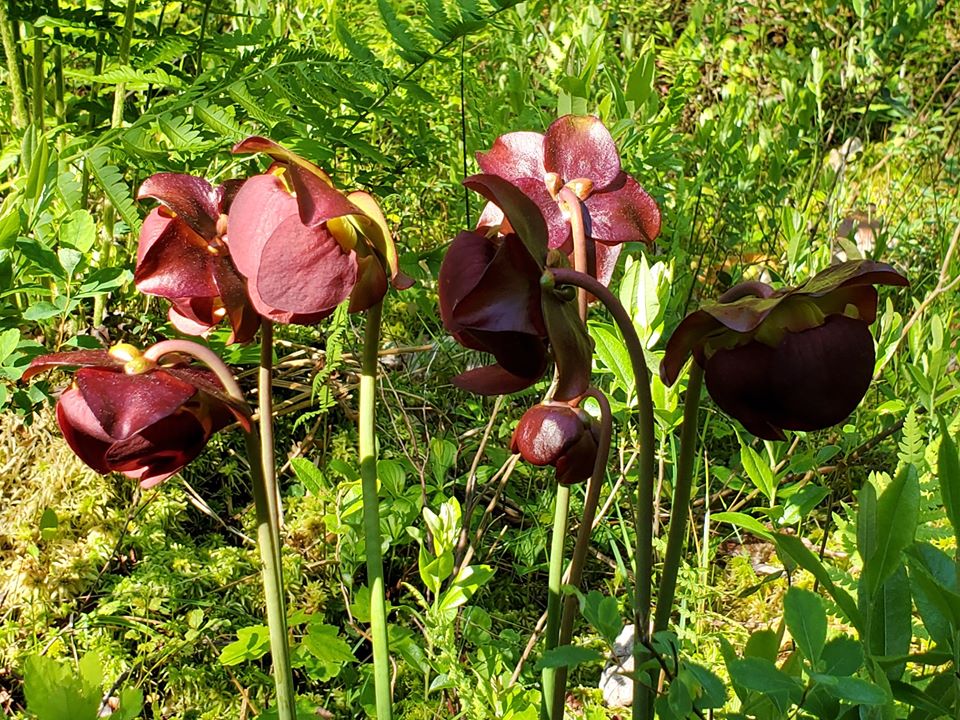Purple pitcher plants (Sarracenia purpurea) are the most common form of carnivorous plant in North America. That said, they are still both special and rare to find. This picture was taken on the edge of the boardwalk going through the fen on the Mary McFalls trail.
This nutrient poor fen is exactly the type of environment where you would expect to find a plant specialized in extracting nutrients from biotic (living) as opposed to abiotic (nonliving) sources. The flowers that will first attract you to the pitcher plants also lure the insects that this carnivorous plant needs to survive in an environment with few available nutrients. The flower’s “liver” color attracts insects, which are further enticed by the “meat” colored veins, which lead into the water filled pitchers. When an insect that enters the pitcher gets wet it is unable to fly away to safety. Insects are unable to crawl to safety because of the slippery surface of the pitcher followed by specialized downward facing “hairs” designed to keep prey inside the pitchers where they will eventually be consumed by the plant. Pitcher plants produce enzymes to help break down prey and develop communities of bacteria in the pitchers and root systems that assist in making nutrients available to the plant.
While the pitchers can be found year-round the flowers will only be visible for a short period so get out there and look now! This is just one of the many special and rare sights easily accessible to guests visiting the Center.
Josh Pulito



